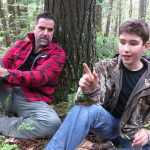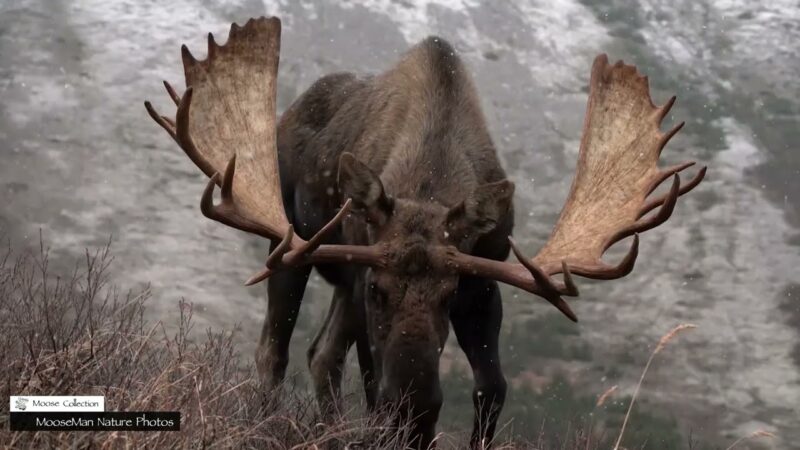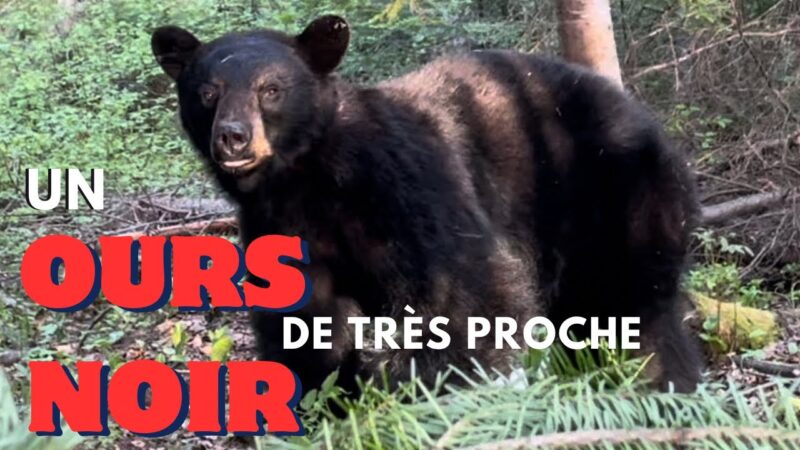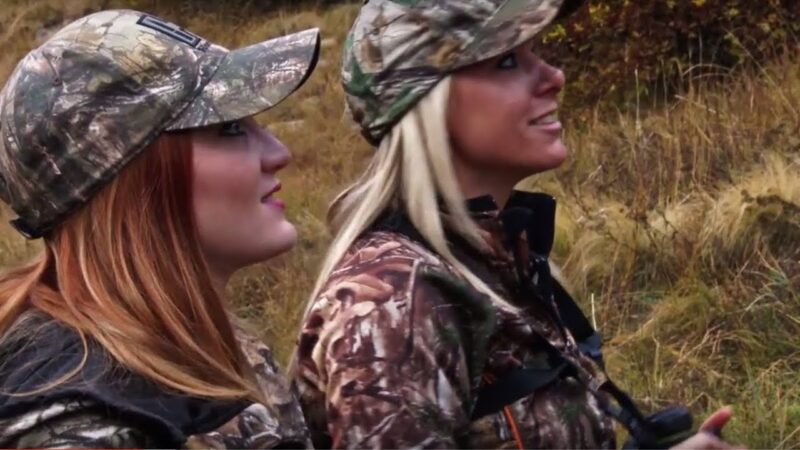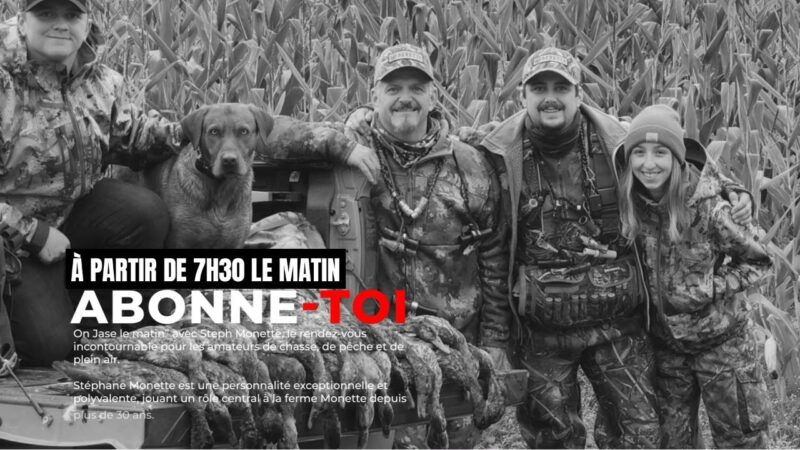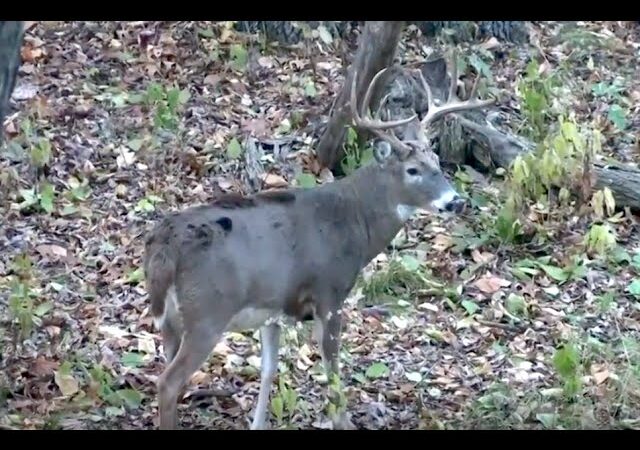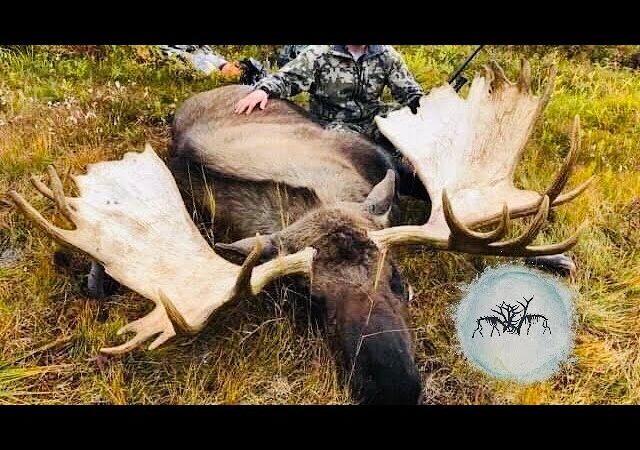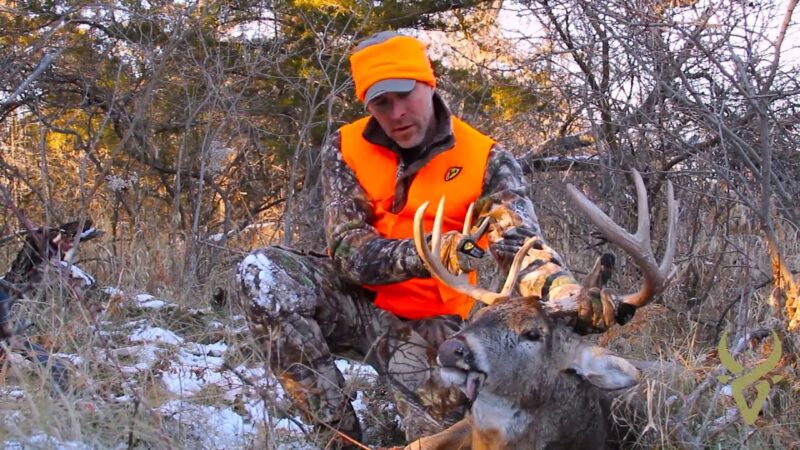Reviews
User Score
Rate This
Descriptions:
Ashuapmushuan, the black bear
Ashuapmushuan, the black bear. The black bear is gaining in popularity among Quebec hunters. For good reason: its meat, long prized by European gourmets but shunned by Quebec gourmets, is a true delicacy. What’s more, the hunt immerses you in nature at its most awakening, flourishing and teeming with life. An unrivalled pleasure for the senses after the off-season. It’s Québec’s national holiday, and Saint-Jean-Baptiste is also mating season for black bears! Michel Therrien heads to the Ashuapmushuan wildlife reserve in the Saguenay-Lac-Saint-Jean region for a special hunting weekend. He’s joined by Stéphanie Vadnais, for whom this will be her first black bear hunting experience, and Pierre-Luc Fontaine, who will attempt to harvest his first game with a bow using a special technique known as bear calling. An episode full of twists and turns in which the bears were very cooperative. The tasty meat from the bears harvested in this episode has been prepared into sausages, roasts, steaks and minced meat, all of which are popular summer barbecue staples.
Black bear
The black bear is the most familiar and common bear in North America. It generally lives in forests and is an excellent tree climber, but can also be found in mountains and marshes. Despite its name, the black bear can be blue-gray or blue-black, brown, cinnamon or even (very rarely) white.
Diet Black bear
Black bears are very opportunistic eaters. Most of their diet consists of grasses, roots, berries and insects. They also eat fish and mammals – including carrion – and easily develop a taste for human food and waste. Bears that become accustomed to human food in campsites, cabins or rural homes can become dangerous and are often killed, hence the frequent reminder: Don’t feed the bears!
Black bear behavior
A solitary animal, the black bear roams vast territories, but does not protect them from other bears. Males can cover a home range of 15 to 80 square miles.When winter arrives, black bears spend the season sleeping in their dens, feeding off the body fat they’ve accumulated by eating greedily all summer and autumn. They make their dens in caves, burrows, brush piles or other sheltered places, sometimes even in high tree holes. The duration of a black bear’s den varies according to the different climates in which it lives, the Canada in northern Mexico. gives gives birth to two or three blind, helpless cubs in mid-winter, and feeds them in the den until spring, when they all emerge in search of food. The cubs will stay with their very protective mother for around two years.Heavy rains on Vancouver Island have raised river levels, meaning that more and more salmon are coming to lay their eggs. More salmon means more natural predators to eat them.Source: National Geographic
Black bear Ursus americanus
The black bear Ursus americanus is one of the most familiar wild animals in North America today. The black bear is a member of the Ursidae family, which is represented in most of the northern hemisphere and parts of northern South America. Other members of this family present in North America are the grizzly and the polar bear. Both species are considerably larger than the black bear, which is a large, thick mammal. Approximately 150 cm long and 100-120 cm high at the shoulder, the adult black bear has a medium-sized head with a rather straight facial profile and a tapered nose with long nostrils. The ears are rounded and the eyes are small. The black bear has hairy feet on which it can walk, like a human being, with the lower part of the foot touching the ground. Each foot is equipped with five curved claws, which the bear cannot sheathe or hide. As bears are compact, they often appear much heavier than they really are. Adult males weigh around 135 kg, although exceptionally large animals weighing over 290 kg have been recorded. Females are much smaller than males, weighing an average of 70 kg.normal color is black with a brownish muzzle and often a white patch under the throat or on the chest. Although black is the most common color, there are other color phases, such as brown, dark brown, blond, cinnamon and blue-black. There are also albino bears (with white fur and red eyes and nose), but they are rare. A unique population of non-albino white-phase black bears can be found on the Kermode Islands, off the Pacific coast of British Columbia. Lighter-colored phases are more common in the west and in the mountains than in the east. Each of these color phases can occur in a litter, but generally all the cubs in a litter are the same color as their mother.
Black bear claw marks
In some regions, bears have been found to intensively mark trees with their claws and teeth. The exact significance of this behavior is still a matter of debate within the scientific community, as tree marking is not commonly observed in all bear populations. Nevertheless, some biologists believe that the trees repeatedly scratched and marked by the bears serve as a form of communication. Adult males most often use these trees, no doubt to signal their presence to potential mates or rivals. Most markings take place during the breeding season, in late spring or early summer, and although rarely heard, the black bear emits several distinct calls. These include grunts, groans, jaw snaps and loud growls of all kinds. These sounds are generally made when the bear is frightened or feels threatened. A female with cubs can warn them of danger with a loud woof-woof and call them with a whimper or whine. The cry of a young bear cub in trouble is similar to that of a human baby.source: Canadian wildlife ferderation





